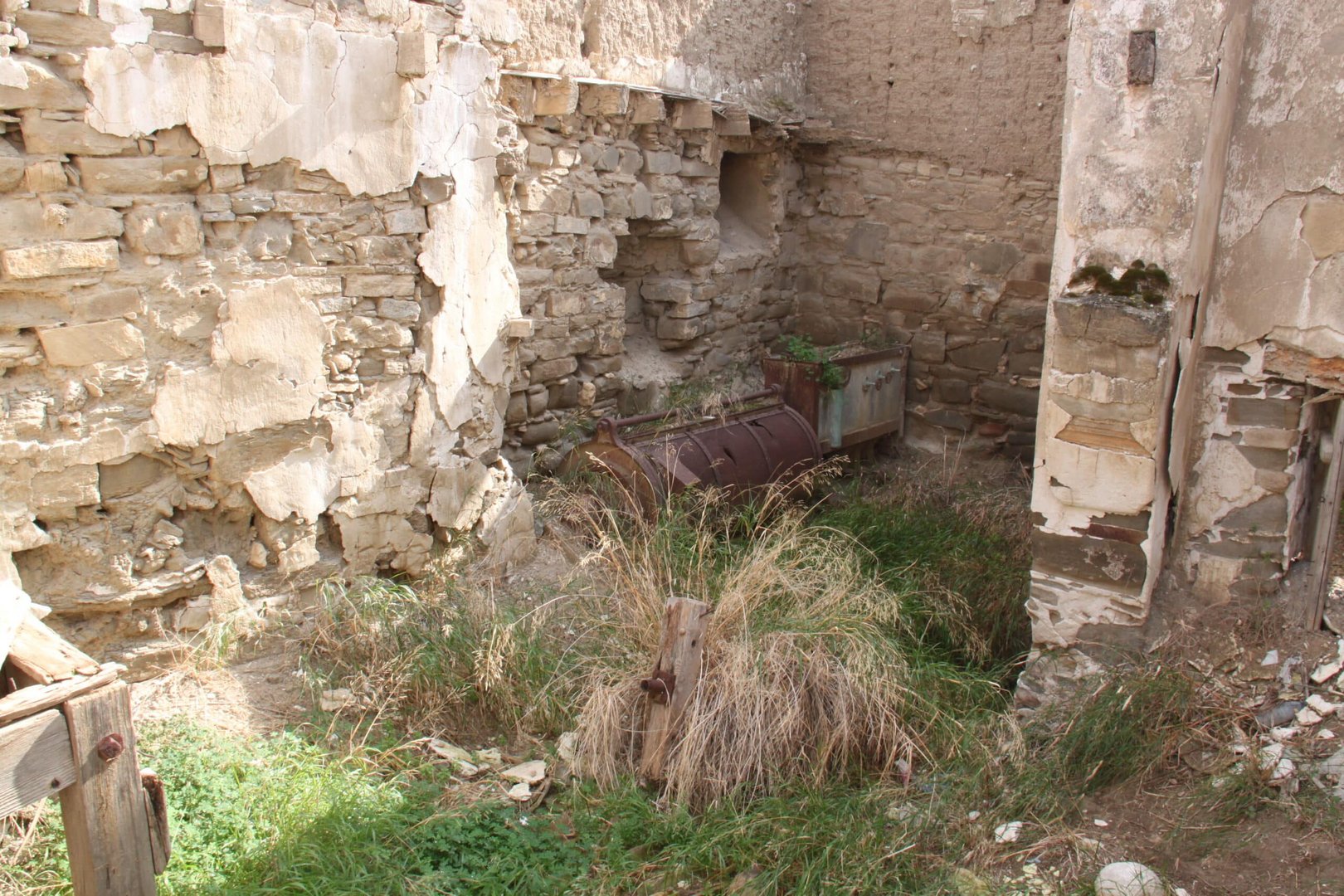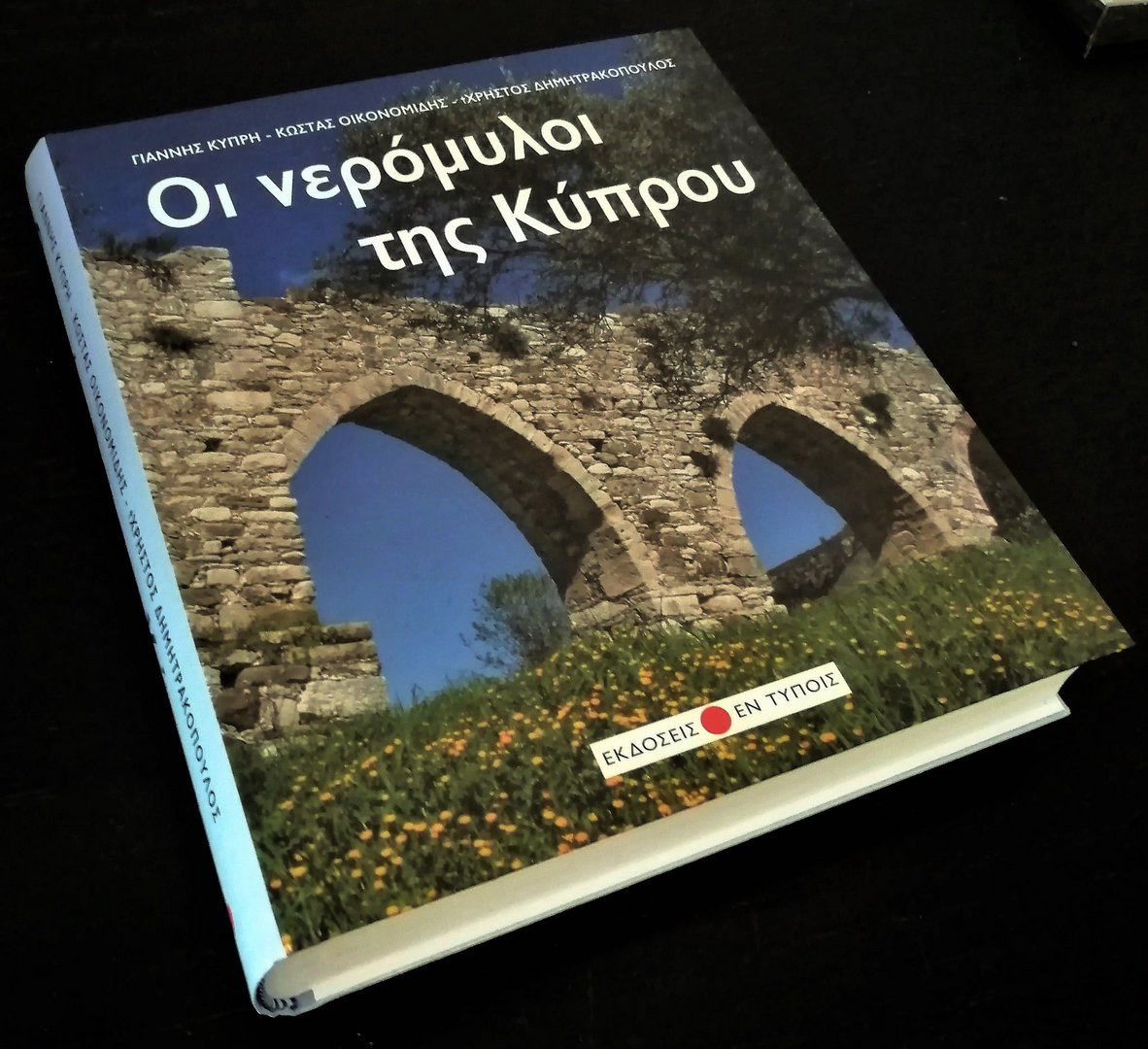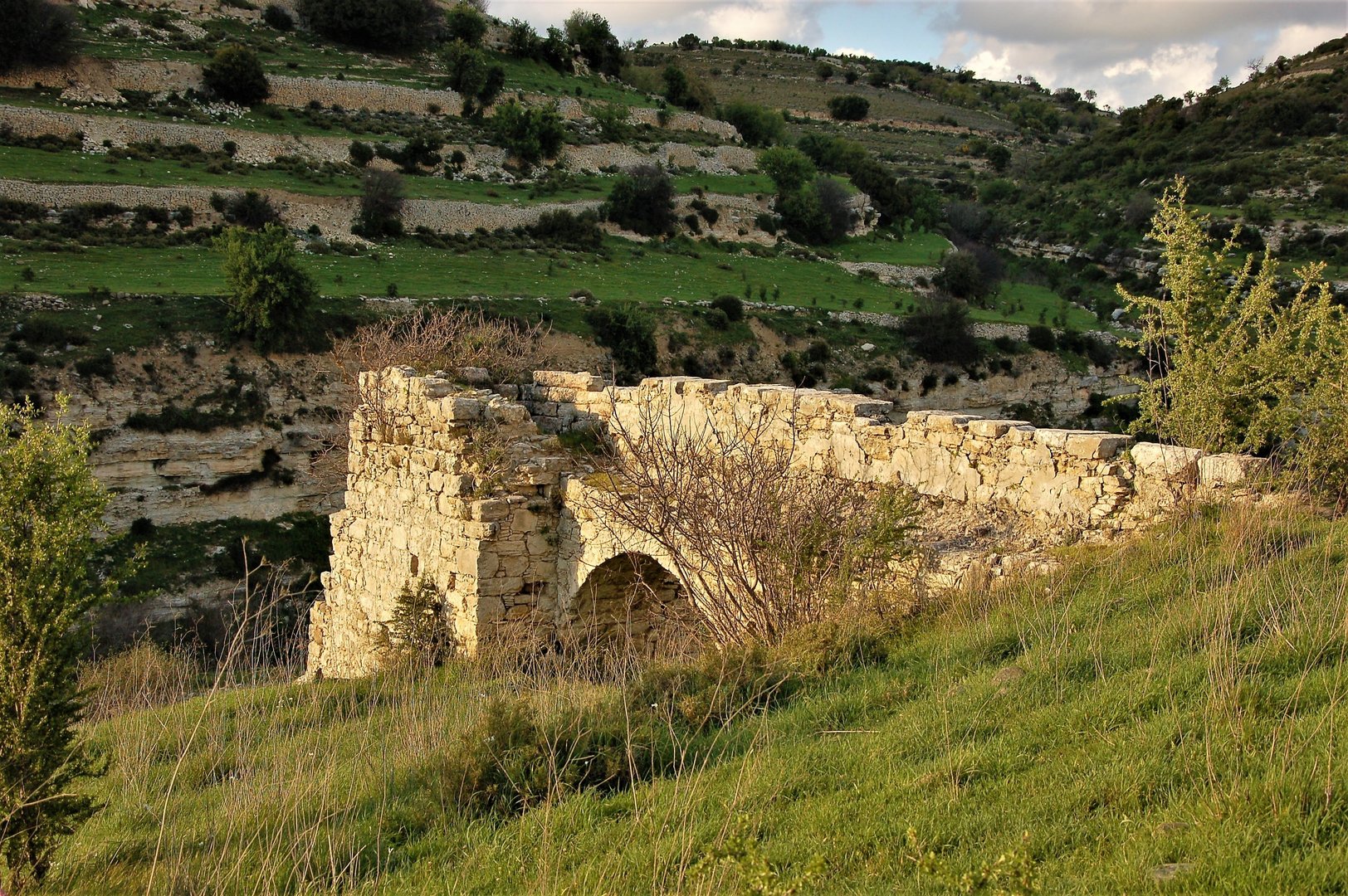A new book celebrates the hundreds of watermills that once graced our rivers and ground our wheat
A new book sheds light on Cyprus watermills as the most complete recording of the over 650 mills that used to operate across the island.
Their love for nature and cultural heritage brought together three men from different walks of life who travelled around the island with a sole purpose: to gather information about watermills.
The watermills of Cyprus (Oi neromiloi tis Kyprou) book is the result of 30 cumulative years of research by charted accountant Giannis Kypri, investment consultant Costas Economides and wine trader Christos Dimitrakopoulos. It was published in November 2022 and showcases this important part of Cypriot life that used to help sustain the local economy for centuries.
But the men’s research all started “by accident” when they coincidentally saw a mill during one of their excursions in the countryside.

One of the watermills at Kythrea
“To be honest when we first saw them, we didn’t know what they were,” chartered accountant Giannis Kypri, who wrote the text, told the Sunday Mail.
But one thing led to another, and the three started gathering information, discovering that there were a lot of watermills around Cyprus, dating back to the mediaeval area.
“In the end, we decided that we should go about it more systematically to search for them,” Kypri, who started his own individual research in 2016. It was then when Dimitrakopoulos and Economides, who had already been researching since 2010, saw his social media posts and realised their common interest.
Together, they started searching in archives, maps and other sources as well as talking to researchers who shared information that was not previously published. Armed with a camera, they also carried out on-site visits to search for the ruins of watermills, but also sugarcane mills which are listed in a specific chapter. An important resource was interviews with locals who remembered where some mills were even in cases where there is no longer any sign of them.
“Toponyms was a starting point in our research,” Kypri said, explaining that studying the names of areas could be an indication there was a mill there, such as the Limassol village Paliomylos (translating as old mill).

Platanistasa
After a couple of years, they realised they had gathered so much material that they had to share it.
“Not a lot of information had been published, so we decided to publish this book,” Kypri said.
The Greek-language book, counting almost 700 pages, was released in November last year and was dedicated to the memory of co-author Dimitrakopoulos, who sadly passed away in December 2019.
Inside the book, there are over 1,100 photographs of the mills but also the on-site visits as well as drawings.
“We managed to find a list from a recording that Ottomans carried out in 1572, which referred to 304 watermills that were then operating in Cyprus. So these watermills must have existed from the mediaeval area,” Kypri said.
The book briefly describes the historical monuments as well as the research methodology, but the main part of the book is the recording in alphabetical order of the 650 watermills in the government and non-government-controlled areas.

The mill at Kissousa
This number excludes the watermills for which there was not sufficient information, but these are still mentioned in the book.
Many watermills could be found in the old town planning registries, Kypri said, however, the book has a lot more information.
Those mills were historically used on the island to grind wheat and barley into flour to make bread. Sometimes they were also used to grind wheat into pourgouri or grind other seeds like corn, while others were utilised to process cotton.
They operated by harnessing kinetic energy from moving bodies of water, but they later used petrol and electricity.

The renovated watermill at Platanistasa which was opened last week
Every watermill has its own story, Kypri said, whether this is the story that is recorded in history books or a story that only locals know and might be related to a war, a love story, a murder or an accident.
“Kythrea for instance, in the occupied areas, has the most mills due to Kefalovrysos river. We recorded 35 watermills which were at a distance of 3km of each other,” Kypri said.
The town was serving the needs of the entire capital, which is why foreign conquerors often occupied Kythrea first, so that Nicosia residents would starve, unable to make bread.
Some watermills were used for energy production, but those were separate constructions operating with petrol that were not used to grind seeds. One of them, dating back to 1927, can be found in Galata.
With the development of modern technology, the use of watermills was no longer sustainable – most of them fell into disuse early in the 20th century – and they have been replaced by more efficient sources of energy, such as fossil fuels.
“The operation of a watermill is much more challenging compared with the faster more modern technologies,” Kypris said. Watermills require a lot of maintenance and are limited in their ability to generate energy. They are also affected by weather conditions, making them unreliable sources of energy.
But Kypris suggested perhaps some which have been restored could be put to use for educational purposes.
“I believe some watermills, such as the ones in Kakopetria, Evrychou, Galata, which are in good condition could operate a few times during the winter. Then, students could visit and learn first-hand about those important monuments,” he said.
Last week, the restored Platanistasa watermill in Nicosia was inaugurated by the interior minister and is now in working condition. The monument was preserved though a European Programme.
An En Tipis publication, Oi neromiloi tis Kyprou is sold for €80.








Click here to change your cookie preferences